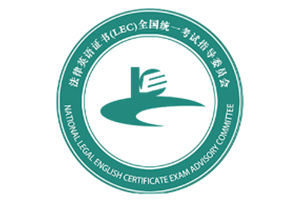Why Benitoite Is So Expensive
Narrator: This small blue gemstone is one of the rarest in the world. And because of the unique way it forms in the earth, benitoite sparkles even brighter than diamonds, making it incredibly expensive. A single carat can cost over $12,000. But you can only really find this gem in one place. So why is benitoite so hard to find? And what makes it so expensive?
Starla Turner: How is benitoite different from other gemstones? It has a…a brighter vitreous luster.
Narrator: That means it looks like glass, but brighter, shinier. It also has a high dispersion, or fire, meaning it can sparkle more than other gemstones.
Dave Schreiner: So, here we are on the top of the mine.
Narrator: This is a private mine. It’s part of Benitoite Mining Company, owned by John and Dave Schreiner. The company is stationed here because facet-grade benitoite can be found in only one location: San Benito County, California. That’s why it’s the state’s gem.
John Schreiner: There have been microscopic deposits found in Japan. But so far, this is the only place where you can find it where it’s actually big enough to hold in your hand and to put in jewelry.
Narrator: Not knowing how rare it was, miners used to extract benitoite just like any other gem, with explosions and blunt force. And now the supply is finite.
Gemstones like benitoite are generally scattered, but sometimes there’s a vein underground where concentrated amounts of the gem collect.
Benitoite formed when an oceanic plate and a crustal plate came together. One plate slid under the other, and water got trapped in the fault line. Magma then intruded into the fault line and mixed with the trapped water. As cracks and veins formed in the surrounding rock, the superheated mixture flowed into them. Here, the rare element barium bound with titanium, silica, and other elements. Together, they formed benitoite.
But finding the gem is a bit of a guessing game. And if John and Dave guess incorrectly, the cost is high. To help them find where benitoite might be, they look for this. The white part of the rock is natrolite, and the dark part, blueschist. These are two minerals that surround and protect benitoite. If they see the white, it may mean they’ve found a benitoite vein. And when the vein breaks out onto the surface, it’s referred to as an outcrop.
Dave Schreiner: A big vein, or a big outcrop, of benitoite was right here and had fallen against the mountain. That was dug out, dynamited. All the material off the top of it’s gone. That doesn’t mean there’s not stones here. They’re all over the place.
Narrator: Yet a benitoite vein hasn’t been found here since the late 1990s. So today, John and Dave are mining in a location they think has potential. They have to narrow down where they think the vein is, because excavating and drilling is expensive, and they can’t afford to be wrong. Core drilling alone will cost them $200,000.
John Schreiner: Funding is always an issue. Mining is not a cheap venture. Normally, that’s what’s holding us back, just having the funds to actually move forward.
Narrator: So as they work up to that funding, they’re also working to confirm exactly where the vein is. After they load all the material they excavated, they can begin processing it to see if there’s a concentration of benitoite. That starts with sorting.
John Schreiner: This is the first stage of the wash plant. Right over here is where the material gets dumped in originally. So, everything above inch and a half gets stopped right there.
Narrator: After this, John can locate larger specimens that need to be acid-etched, where acid is used to carefully break off the benitoite from its surroundings. They also screen for everything under an eighth-inch, and the sorted material goes up a long conveyor belt to be washed in the trommel. The trommel shakes and cleans the rocks before they hit the black-light room.
Benitoite is fluorescent, so the Schreiners use UV light to identify the gem without damaging it. After, he screens and washes all the fluorescent pieces and collects the best ones.
John Schreiner: There’s one of them. That is a benitoite.
Narrator: Even though John found some good pieces of benitoite, today’s excavation was just OK.
John Schreiner: This is good. We’ve done better.
Narrator: Still, he and Dave remain hopeful. They’re confident that they’re getting really close to locating that vein.
John Schreiner: Finding another benitoite vein would be outstanding. It would change a lot of things. That is the direction we’re going in and that we want to go in. It’s financially hindering, but we are getting there.
Narrator: But even if John and Dave find a vein, it doesn’t mean all the benitoite they excavate can be sold for top dollar. Benitoite is a naturally small gem, like diamonds, so most of the rocks they find can’t be faceted into a clean, clear gem.
John Schreiner: On average, you lose about 80% of the stone during the cutting process. It also depends on how clean you want the stone to be.
Narrator: But the remarkable and highly valuable properties of benitoite make all this work worth it.
Starla Turner: What’s also very unique about benitoite is that it is doubly refractive. So when the light enters the stone, it splits into two rays.
Narrator: This creates a doubling effect, giving benitoite a complex internal appearance. Yet on the surface, it looks like light bounces off the gem on all sides. The depth these qualities create is enriched by the stone’s color, which shows in the price.
Starla Turner: In a color gemstone is color. Color, color, color is the first and last and most important factor affecting value in a color gemstone. And depth also holds the color. Like, a deeper stone can have a deeper color, and that makes it more valuable. The darker the color, the more valuable the stone typically is. It is amazing. Anytime you look at something like this and you think, “How in the world did this ever happen? That I could be holding something in my hand that represents such an amazing geological formation and event, and what had to happen for all of this to occur.”















